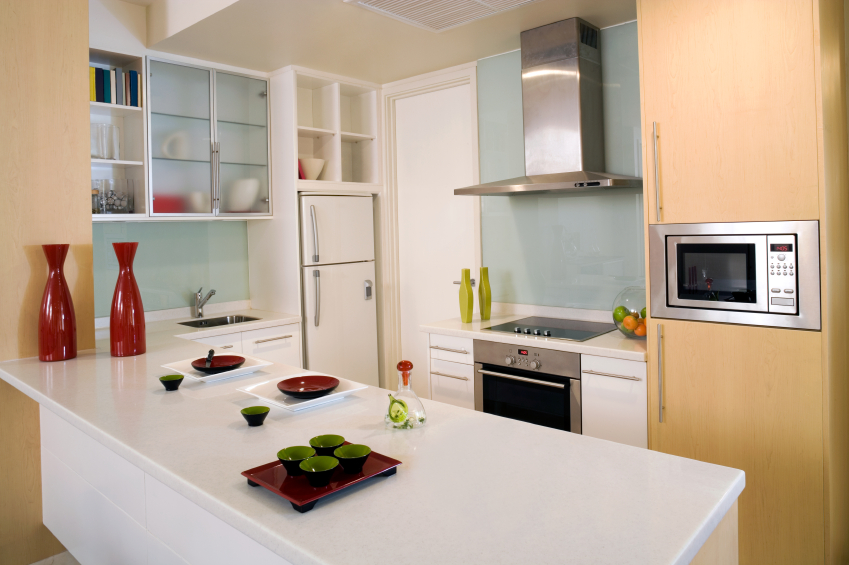Is it Safe to Microwave?
 The convenience of microwave ovens is undeniable, particularly with newer under-counter and over-range configurations that leave plenty of counter space available. These microwave ovens may be the most handy, but also the least safe. They expose sensitive body parts to radiation, albeit in very small amounts. The Food and Drug Administration and many experts agree the radiation emitted from microwave ovens is safe. However, the FDA also admits there are few conclusive long-term studies on the matter.
The convenience of microwave ovens is undeniable, particularly with newer under-counter and over-range configurations that leave plenty of counter space available. These microwave ovens may be the most handy, but also the least safe. They expose sensitive body parts to radiation, albeit in very small amounts. The Food and Drug Administration and many experts agree the radiation emitted from microwave ovens is safe. However, the FDA also admits there are few conclusive long-term studies on the matter.
On the other hand, there are other proven health threats and risks associated with microwave ovens.
Minimize radiation exposure
As long as your microwave carries an FDA safety label, it is guaranteed to emit less than five milliwatts of radiation per square centimeter at two inches from the oven. This is far below the level that is proven to be harmful to human health, and the radiation levels drop off quickly with distance. Still, it is worth taking precautions.
Avoid spending time cooking directly in front of a combination range hood and microwave. High levels of microwave radiation can cause cataracts and damage the lens of the eye. Likewise, working on the counter standing in front of under-counter microwaves is a bad idea. High levels of microwave energy can damage testicles and produce temporary sterility.
Also make sure your microwave is in reliable working condition. Follow all directions in the instruction manual, and don’t use a microwave if the door or casing are bent or damaged. Also stop using a microwave immediately if it continues operating with an open door. The FDA requires locks and monitors that ensure the unit stops immediately if the door is opened.
Avoid metal, plastic in microwaves
Keep metal utensils, foil and containers out of the microwave. They may reflect microwaves, cook food unevenly and damage the oven. The microwaves reflected off these materials can cause the food to cook unevenly and can possibly damage the oven. Thin metal also can create sparks and fires.
Plastic also should be avoided. Many plastic containers are labeled as “microwave-safe,” but there is no official definition of the term. Many plastics are liable to melt or release dangerous amounts or Bisphenol A, a chemical better known as BPA that is known to cause developmental and neurological problems.
Glass and ceramics are safe for microwave use.
Additional warnings
Microwave ovens can heat water past the boiling point. This could pose a burn risk for older adults with limited mobility. This generally does not happen if coffee, stock cubes or other ingredients are added before heating the water.
Also keep in mind that microwave radiation cooks food unevenly, which may be a concern when cooking raw meat. Make sure meat is hot enough to kill bacteria.
Finally, do not use microwaves for home canning. The temperatures are not high enough to kill all potentially harmful bacteria.
When used properly, microwave ovens are generally regarded to be safe. However, follow directions and take proper precautions.
Looking for a Pro? Call us (866) 441-6648

Plumbing Average Costs
Plumbers Experiences

Ceiling Fan Replacement By A Fast, Knowledgeable And Reasonable Electrician

Restaurant Ceiling Fan Installation To Beat The Florida Heat



